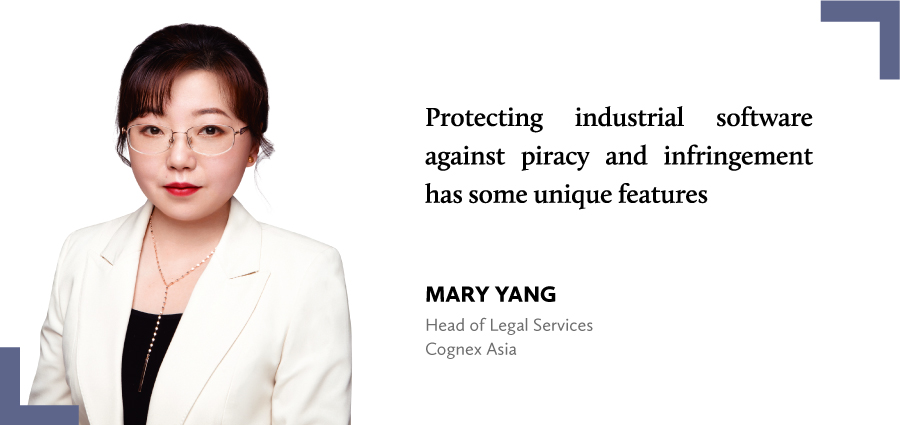Protecting high-end industrial software against pirates requires strategy. Lack of precedents, in terms of investigation and enforcement, and the sly nature of infringement operations make them hard to detect. Mary Yang, head of Legal Services, and Jessica Fan, principal legal counsel at Cognex Asia, reveal how they hunted down software pirates and brought them to justice, setting some game-changing precedents in the process.
Safeguarding IP is a key responsibility of any in-house legal team. The focus of IP defence work is to complement the overall business strategy. After more than seven years of rights protection in China, Cognex has learned that, unlike consumer and industrial products, protecting industrial software against piracy and infringement has some unique features, and entails high investigation and verification costs, because piracy is clandestine.
Cognex is a machine vision technology company that develops software, sensors and systems used in computers and automation equipment for a wide range of applications in the electronics, automotive, logistics and life sciences industries. The company’s industrial software helps users to execute various functions, including geometric object positioning and identification, and measurement.
Some of the challenges in defending against piracy of high-end software include:
Difficulty in detection. Firstly, copying pirated software is a simple and quick process, easily done on a single computer. The infringer needs neither to prepare components in advance, nor have large quantities in stock, nor even use formal office space. Due to the special nature of industrial applications, traditional means of combating fakes are almost useless in Cognex’s work of detecting piracy and gathering evidence of infringement. The tracks of pirated software are obscured, making detection by the usual means difficult.
High technical threshold. Crackdown actions additionally require providing evidence of the attributes of the piracy to the government functional authority, requiring efficient means of providing such evidence, but due to the high technical threshold for industrial software, the costs required to evidence the attributes of piracy are high.
Lack of precedents. In the consumer goods sector, following long, wide-ranging and extensive administrative and judicial practice, actions to crackdown against infringement goods are now very common, with a plethora of major cases continually taking the spotlight. However, a lack of precedents on appropriate penalties for industrial software piracy makes law enforcement authorities cautious in their approach, and attracting their attention to such types of infringement poses a challenge.
Not only are industrial software cases rare, but they are usually concentrated in Shanghai and Beijing. Examples of such law enforcement cases in second and third-tier municipalities were almost non-existent until at least 2019. Due to limited practical experience and complex technical issues involved in industrial software, the understanding of identical facts among law enforcement and judicial authorities across municipalities and regions is inconsistent.
You must be a
subscribersubscribersubscribersubscriber
to read this content, please
subscribesubscribesubscribesubscribe
today.
For group subscribers, please click here to access.
Interested in group subscription? Please contact us.






















